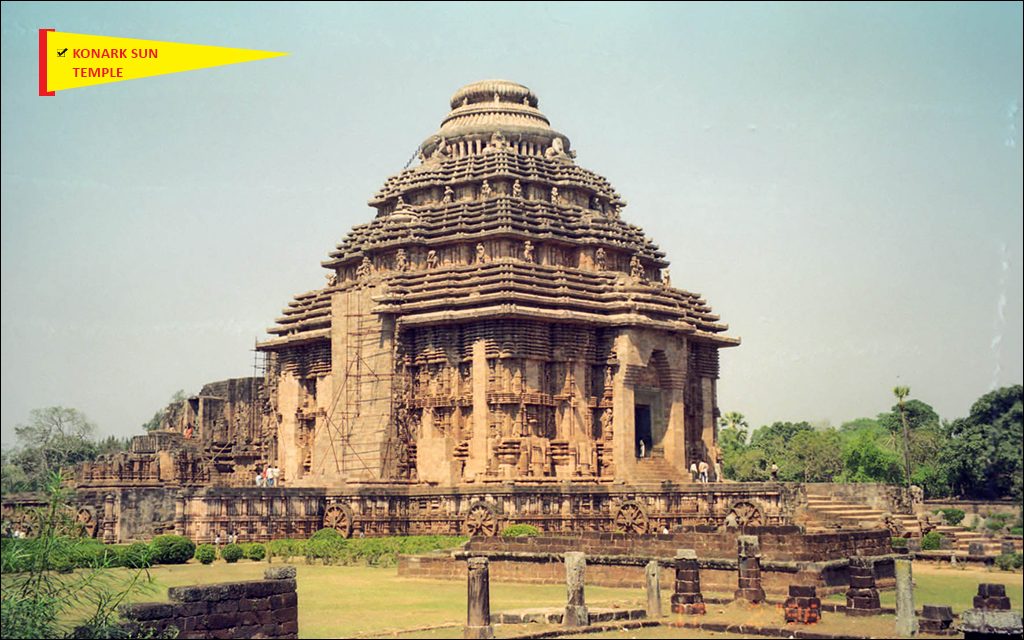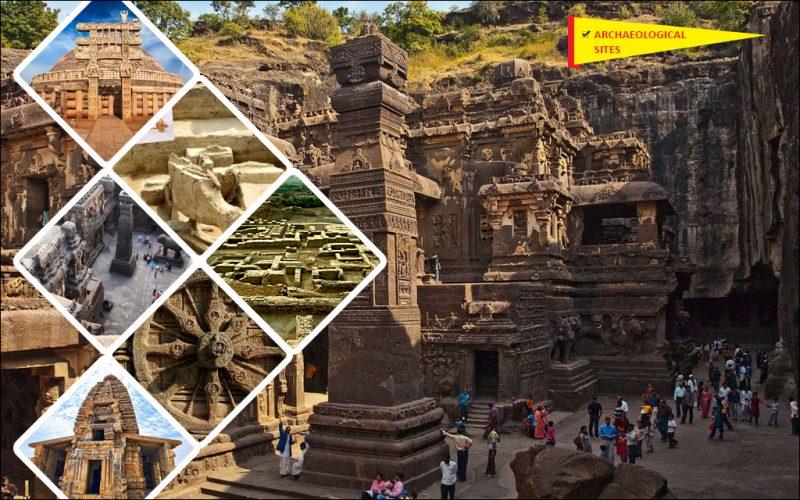India is a land of diversity and home to one of the ancient civilizations in the world i.e. Indus Valley civilization. Over eons, it has witnessed the rise and fall of great empires, brutal invasions by outsiders, massacres, prosperity, and what not. India is a land of mysteries which fascinates and attracts travellers from across the world to explore the country, get familiar with its rich history, and understand its culture and people. Which is why, we bring you solid reasons to visit these phenomenal archaeological sites to recap Indian history. Get ready to unleash the history buff in you and make a wish list today to capture these historical places in India on your camera.
Ajanta and Ellora Caves, Maharashtra
One of the important archaeological sites in India, the caves of Ajanta and Ellora are a classic example of fine craftsmanship skills of that time. These handmade caves are carved using only a hammer and a chisel thereby justifying their enlistment in the world’s heritage sites. Ellora caves are a great fusion of Hindu, Jain and Buddhist philosophies. Housing more than 100 caves, Ellora has only a handful of caves that are open for the public. Kailash temple in Ellora caves is carved out of a single rock, the artwork on which is so surreal that you won’t be able to resist imagining yourself present at the time it was built. The life-size elephant sculptures will take you back in ancient era when the foundation stone of grand rock-cut architecture was laid. The ancient painting of Ajanta and Ellora caves depicting Buddha and Jataka tales are a treat to the eyes!
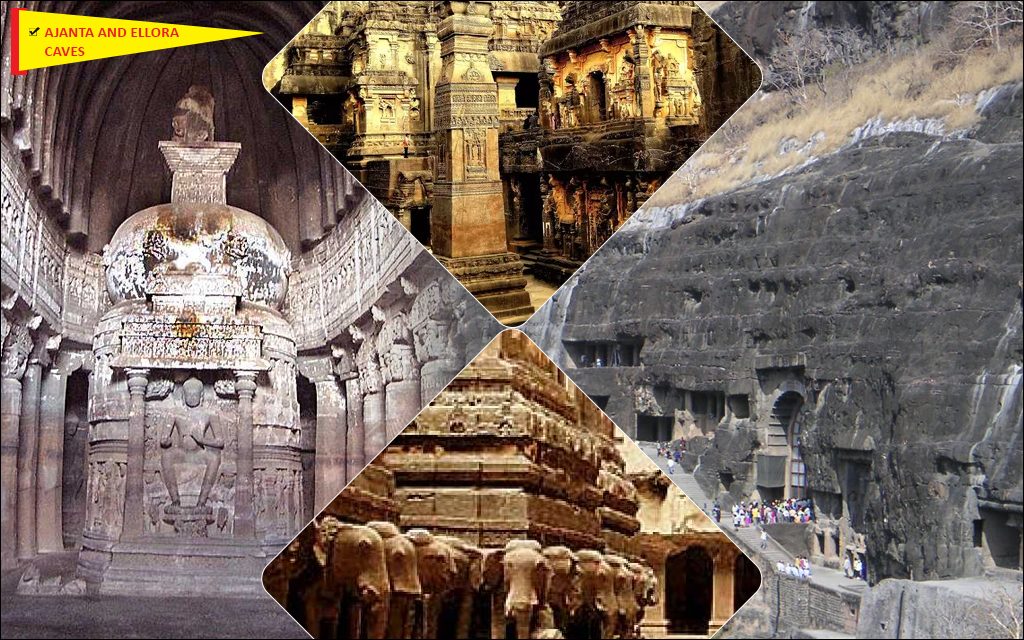
Humayun’s Tomb, Delhi
Humayun’s tomb is an intricate blend of Indian and Persian architecture. This historical place was commissioned by Mughal emperor Humayun’s wife Hamida Banu Begum in the fond memory of her husband. The sublime and proportionate architecture of the tomb can make anyone fall in love with this iconic monument of the country. This splendid mausoleum introduced the concept of ‘charbagh’ i.e. four gardens in every quadrant with pools joined by channels. Over 150 members of Mughal dynasty were buried here. Arched alcoves, corridors and the high double dome, reminds of the Persian influence.
Mughals considered it auspicious to bury the dead near the shrine of a sufi saint. Which is the reason why Humayun’s tomb is centered at the shrine of notable sufi saint Hazrat Nizamuddin Auliya. Mughals were not only known for their generosity but also for building outstanding marvels combining the essence of Indian architecture and Persian one. Build with red sandstone, this final resting place of the Mughal ruler can land you back in the golden era. Interestingly, the last Mughal emperor Bahadurshah Zafar took refuge here before he was captured and sent in exile by the Britishers. This astonishingly well-planned piece of architecture is a place that deserves a visit once in a lifetime.
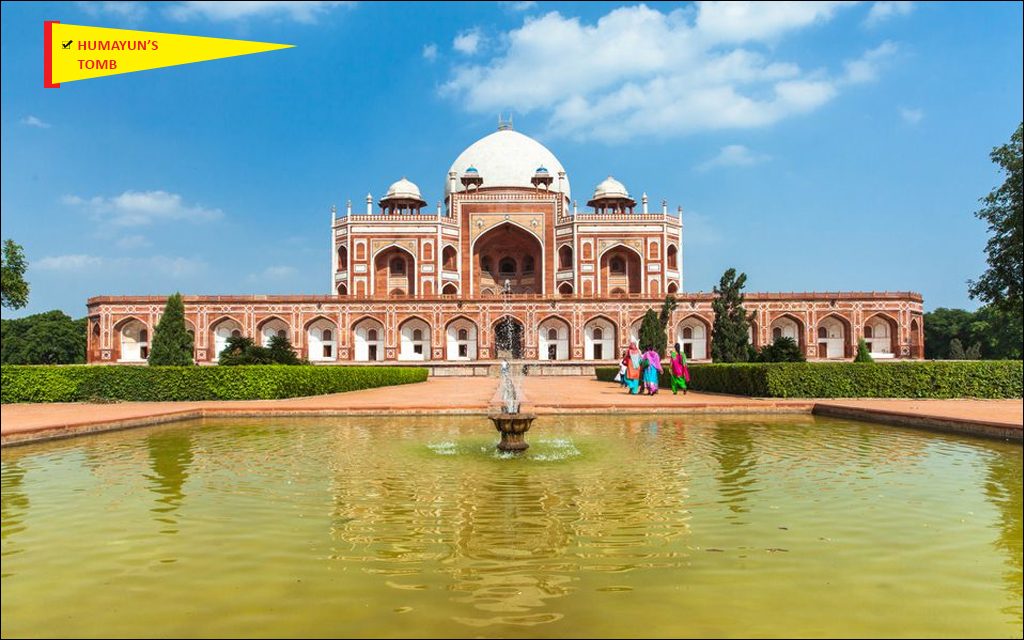
Nalanda University, Bihar
If you are a history buff, then you’d know about the importance of Nalanda University. However, if you are not aware of this oldest education institution in the world, then don’t worry, you’ll get to know everything about it in here. Founded in 5th BC (yes, it’s that old!), Nalanda University is one of the first universities in the world. Built by mighty Gupta and Pal Empires, this marvelous university was a famous learning center where students from all every corner of the country used to come to study Vedic learnings.
The university during its peak used to accommodate over 10,000 students and 2000 teachers which was quite a number in those times. Sometime in the 13th century, it started to lose its legacy and was completely destroyed by Mamluk dynasty. One can find references to the university in the writings of Hiuen Tsang, a Chinese traveler who witnessed the glory of the university. Nalanda University was indeed an architectural wonder on the earth. It is said that the library of the university was so huge (composing important ancient manuscripts and books) that it kept on burning till six months after the giant structure was attacked. Fancy a visit now? Who’s there to stop you? Pack your bags to reconnect with ancient India.
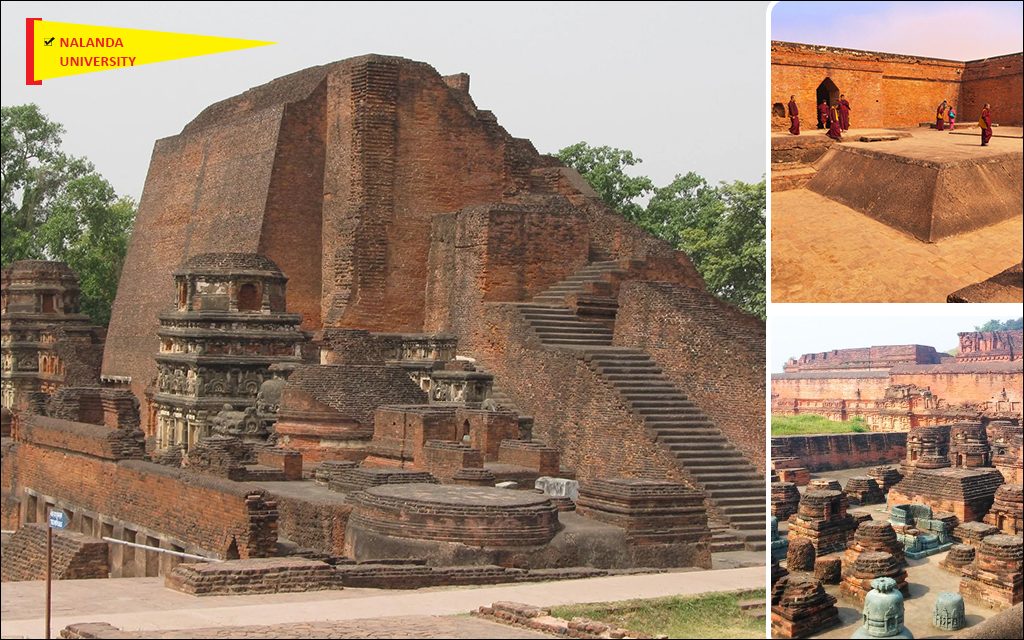
Lothal, Gujarat
Lothal was a famous Harappan settlement and a chief site that connected the oldest civilization with other civilizations of the world. Although the place has nothing to see, like literally nothing – no fortification, no great walls, no traces of civilization leaving the excavated items and ruined structures that cannot be categorized. But the reason of Lothal being a popular tourist attraction in the state lies in the fact that it’s a place where your imagination runs wild (recreating the scenario when Harappan civilization was in its prime) and you easily get lost in this oldest cradle of civilization.
Lothal was a well-planned town with an impressive drainage system, bathroom toilet, water storage which is why it is flooded with several historians and archaeologists round the year. This sleepy town got a tragic end when severe floods got the best of it. It was once an important industrial center from where commodities were traded with other civilizations. History lovers can feel free to dig up the past and explore the unexplainable beauty of India’s first port city. The mystery of lothal is still a challenge to scholars.
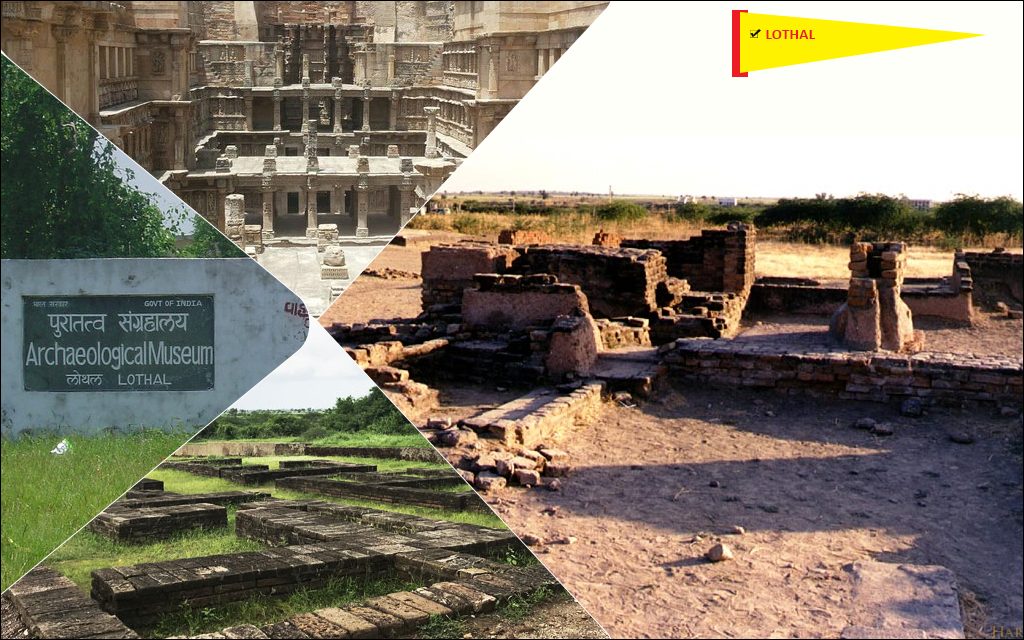
Khajurao Temple, Madhya Pradesh
Khajurao is a group of Hindu and Jain temples built by Chandela rajput rulers. It has earned the name “Khajurao” owing to the palm trees found in abundance. Surrounded with water bodies, these temples are a pleasant sight to the eyes. These chains of temples are also wrongly portrayed as a place that amplifies sensuality and eroticism. Truth be told, only a few of the sculptures can be considered in ‘erotic art’ category. These sculptures represent a wider range of human emotions and feelings such as grace, love, passion, beauty among others.
The temples have carvings signifying the complex yet beautiful composition of Hinduism and Jainism beliefs depicting gods, goddesses, demo gods, and apsaras. Dedicated to lord Shiva, Ganesha and Sun, these sandstone temples are architecture marvel and are a world heritage site. The unique carvings and architecture of these temples compel tourists to pay a visit. It is indeed a place that bears stark contrast to the conventional Indian values that will leave you shocked!
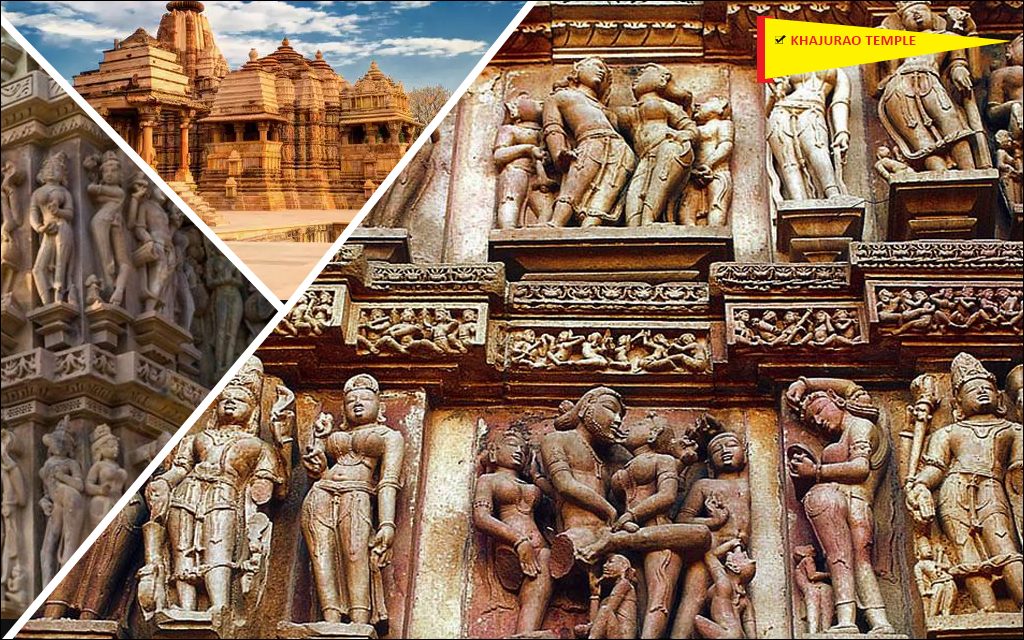
Hampi, Karnataka
The village of Hampi tells the tale of the once-prosperous Vijaynagar Empire and its downfall. The site is flooded with ruined temples, monuments, ornate halls, treasury buildings, canals, gopurams etc speaking volumes about the golden days of one of the strongest kingdom in the country. Virupaksha temple boasts of interesting Dravidian style of architecture constructed by Chalukyas in 7th century AD. These magnificent ruins are a testament of heights that Vijaynagar Empire once reached. No wonder it has earned its enlistment in the world’s heritage sites.
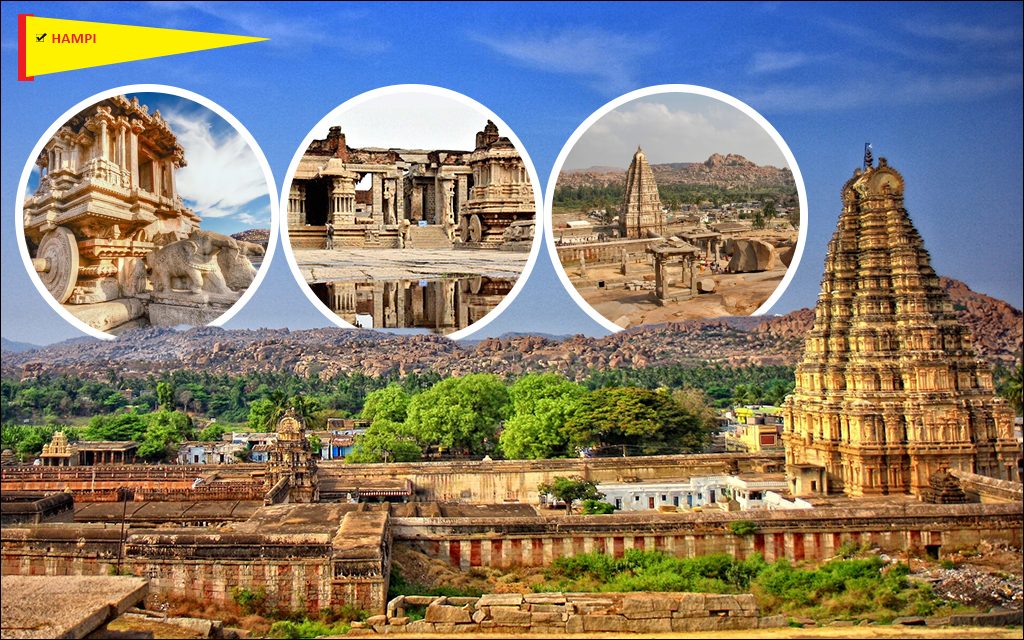
Konark Sun Temple, Odisha
Also called
